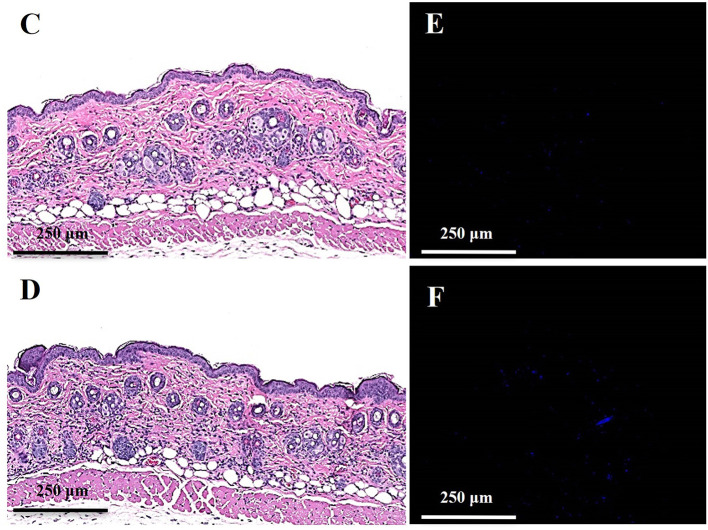In the original article, there was a mistake in Figure 4, panels C and D as published. The images from days 5 and 7 in Figures 4C and 4D are too similar and are not from two days apart (day 5 and day 7). The corrected Figure 4 appears below.
Figure 4.
Oregano oil treatment of PA01 infections in the burn wounds. (A,B) Gram-stained longitudinal section (A) and crossing section (B) of a representative wound showing the presence of PA01 biofilms outlined in red. The skin sample was harvested 24 h after bacterial inoculation. (C,D) Successive bacterial luminescence images of representative wounds infected with 5 × 106 CFU of luminescent PA01 with (D) and without (C) oregano oil at 10 mg/ml. The oregano oil was topically applied onto the wounds at 24 h after bacterial inoculation. (E) A dose response of mean bacterial luminescence of the wounds infected with 5 × 106 CFU of PA01 in the presence or absence of oregano oil treatment at 5 or 10 mg/ml. (F) Time courses of mean bacterial luminescence of the infected wounds in the presence or absence of oregano oil treatment at 5 or 10 mg/ml from days 2 to 7. (G) Mean areas under the bacterial luminescence curves (F), representing the overall bacterial burden of infected wounds. (H). The wounds were treated with grape seed oil (control) or oregano oil 24 h after infection and bacterial CFU were quantified on day 7 after bacterial inoculation. RLU, relative luminescence units; A.U., arbitrary units. The data represent means ± SDs (n = 8). **p < 0.01, ### or ***p < 0.001 and #### or ****p < 0.0001 in the presence vs. absence of oregano oil. ns, no significance.
In the original article, there was a mistake in Figure 6, panels C and D as published. Figure 6C was mistakenly duplicated from Figure 6D. The matched images of Figures 6E and F from the same level of tissue slices as Figures 6C and 6D are updated accordingly. The corrected Figure 6 appears below.
Figure 6.
Toxicity evaluation of oregano oil to normal mouse skins. The dorsal skin of mice was topically treated with (A,C,E) or without 10 mg/ml oregano oil (B,D,F) once a day for three consecutive days. On day 4, the skins were photographed (A,B), followed by histological examination (C,D). The skin sections were also TUNEL stained (E,F). DNase I treated skin samples (G) were TUNEL stained in parallel as positive-staining controls.
The authors apologize for this error and state that this does not change the scientific conclusions of the article in any way. The original article has been updated.




